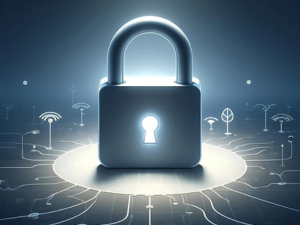 Have you ever noticed movies where a scene flashes back to an actor’s younger version? Before 2017, they used a lookalike—a real person playing a role—but that world is gone now. Digital deepfakes do the job of voice and image restoration, and Hollywood’s executives are not the only ones reaping the benefits.
Have you ever noticed movies where a scene flashes back to an actor’s younger version? Before 2017, they used a lookalike—a real person playing a role—but that world is gone now. Digital deepfakes do the job of voice and image restoration, and Hollywood’s executives are not the only ones reaping the benefits.
Still, suppose you aren’t in the business of making video content. In that case, there are many valid reasons why you should protect your business from deepfake technology. It’s in the corporate realm now, whether that’s synthetic characters to replace expensive commercial actors in your advertising agency or a company leader’s bio you don’t want to keep reshooting.
If you’d like to protect your business interests from nefarious players, read more about the harmful side of deepfake technology below.
Why Is Deepfake Dangerous to Your Business?
Deepfakes use artificial intelligence to replicate, alter, or produce synthetic media, from photos and videos to audio and text files. However, as it becomes more believable, the problem of false information arises. Couldn’t malicious actors use deepfake to imitate you as a business owner or an industry leader to spread misinformation or collect valuable data to exploit?
According to IDSA, identity-related issues like these make up 90% of all cybersecurity breaches in larger organizations. These processes take time and money, so cybercriminals primarily use them in high-reward situations against larger or higher-profile enterprises. Still, where there’s an opportunity, there’s a threat, even in smaller operations.
The Top Three Ways To Protect Your Company
Here are three ideas for protecting your business from deepfake technology and its many forms.
#1 Help Your Employees Create a Solid Defense Line
The first step in barring cyber threats is to inform employees. If they understand deepfake detection measures, they can identify potential threats and stay safe.
Are there suspicious audio and video conversations coming up where responses sound pre-recorded? Is there an unusual silence or unrelated answer that a conversation in real-time wouldn’t include?
Pay attention to the following:
- The speaker’s voice, speech patterns, and wording
- Unusual movements or anomalies in video calls
- Concerning requests or questions
#2 Use Codes When Verifying Business Contacts You Communicate With
Protecting your business from deepfake technology can be as easy as creating a verbal code only known to your company and those you transact with. Something is amiss if you discuss valuable information or prepare to send large sums for which the receiver doesn’t know the code.
However, a passphrase creation system is essential since one code over a long period gives hackers more time to guess it or trick your employees into revealing it. It generates new, random codes that you can reveal over secure channels daily.
#3 Invest in Advanced Threat Detection For Your Business
You probably already have multi-factor authentication protecting your company’s data, such as:
- Fingerprint and face recognition
- Passwords
- One-time codes
Still, advanced threat detection requires security measures. Start protecting your business from deepfake technology. Machine learning is here to stay.


